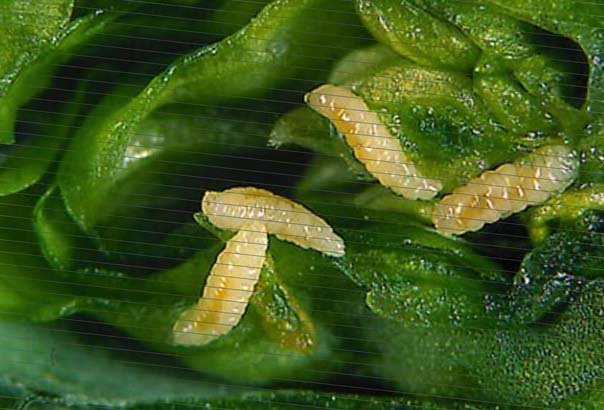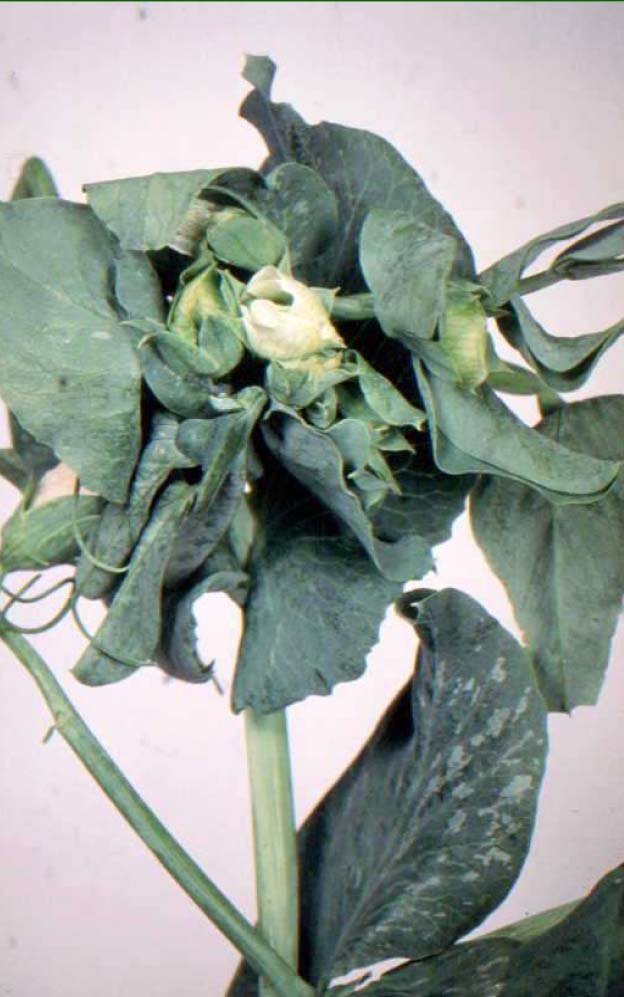 Full
FullGuide »

January 2025
Pea midge
Attacks by this pest may result in loss of yield and can be very serious where populations have built up in intensive pea growing areas. Vining peas can be more susceptible than combining peas and yields may be substantially reduced.
DESCRIPTION AND LIFE HISTORY
The adult, a small gnat-like insect, has a yellow-grey coloured body about 2mm in length, and six long legs. The head is dark with a pair of very fine antennae. The wings are semi transparent and slightly longer than the body and when the midge is at rest, they are folded together along the insect's back.
Midges begin to emerge from previously infested fields during the first half of June, and after mating the females fly to those pea crops where buds and flowers are present. Batches of 20or more eggs are laid on the young leaves surrounding the rudimentary buds, and on the buds themselves. After 4 days the eggs hatchand the larvae enter the developing buds where they live and feed at the base of the ovaries. The buds become swollen and gouty and do not produce pods, thereby resulting in loss of yield. Larvae may also feed in the clustered leaves of the growing point and the top of the plant remains shortened and develops a "cabbage" or "nettle-head" appearance. In wet periods, the damaged tissue may also provide a site for infection by fungi such as Botrytis spp. After about 10 days, the larvae are mature and fall to the soil where some pupate and give rise to a second generation of adults 11 - 14 days later. Larvae produced by these adults, and those which do not pupate from the first generation, remain in the soil over winter. The majority emerge in the following two seasons.

CULTURAL CONTROL
There is little evidence of differences in susceptibility between varieties of peas although often it is the later sown crops which are affected. The prime sources of pea midge are those fields which carried heavily infested crops in the two previous seasons. Sowing peas in areas adjoining such infested fieldsshould be avoided where possible. Crops in which most of the flowering is over and where pods have set will not themselves suffer yield loss, but if attacked would contribute to the increase in the general level of midge population in the area. Large scale rotational practice involving neighbouring farms could be considered.

CHEMICAL CONTROL
In areas of high incidence of attack, spraying of vining peas is recommended as soon as the first midges are seen in the crop. Vining pea crops from the Humber, northwards, may not suffer damaging attacks until late June and this means that in most areas, early crops need not be sprayed, but mid and late season crops should be treated as they reach the susceptible stage.
SUSCEPTIBLE CROPS are those at the early green bud stage, which will show their first white flowers in a weeks’ time.